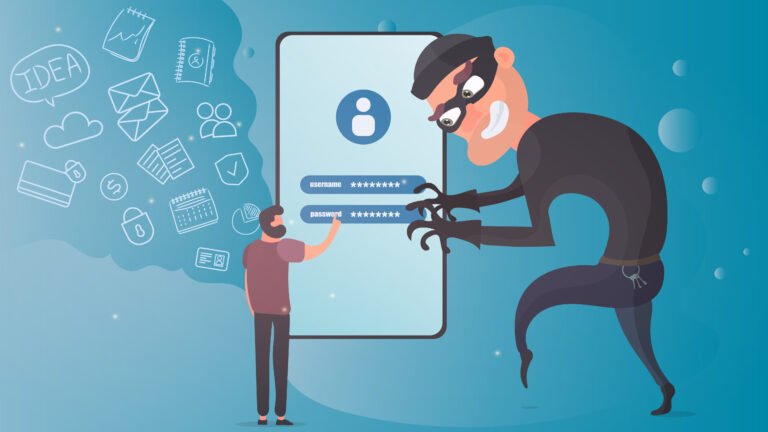10 Tips for Protecting Yourself from Phishing Attacks
Learn how to identify and avoid phishing emails with these tips
How to Protect Yourself from Phishing Attacks
Phishing attacks are a common form of cybercrime that seek to trick individuals into revealing sensitive information or infecting their devices with malware. It is important to be aware of the tactics used by phishers and take steps to protect yourself.
We will give you 10 tips to protect yourself from phishing attacks.

1. Be Cautious of Unexpected Emails or Messages
Be cautious of unexpected emails or messages, especially those that ask you to click on a link or download an attachment.
Phishing attacks often come in the form of unexpected emails or messages, so it’s important to be wary of any communication that you didn’t initiate or that seems out of the ordinary. This can include emails or messages that ask you to click on a link or download an attachment. If you receive an email or message that you weren’t expecting and it seems suspicious, it’s best to exercise caution and not take any action until you can verify the identity of the sender.
2. Verify the Identity of the Sender
One of the most effective ways to protect yourself from phishing attacks is to verify the identity of the sender before responding to any communication. This can help you avoid falling victim to scams that rely on impersonation or deception. To verify the identity of the sender, look for signs that the email or message is not legitimate, such as misspellings or strange logos. If you’re not sure whether the sender is legitimate, you can try contacting the company or organization directly to verify the authenticity of the communication.
3. Avoid Clicking on Links from Unfamiliar Sources
Don’t click on links in emails or messages from unfamiliar sources. Instead, type the website address directly into your browser to ensure you are going to the correct site.
Phishing attacks often rely on tricking you into clicking on a malicious link that takes you to a fake website. To avoid falling victim to these types of scams, it’s important to be cautious of links in emails or messages from unfamiliar sources. Instead of clicking on a link, try typing the website address directly into your browser to ensure you are going to the correct site. For example, if you receive an email that appears to be from your bank, but you’re not sure if it’s legitimate, don’t click on any links in the email. Instead, go to your bank’s website by typing the address directly into your browser.
4. Use Strong Passwords and Enable Two-Factor Authentication
Use strong, unique passwords for all of your accounts and enable two-factor authentication whenever possible.
One of the most effective ways to protect yourself from phishing attacks is to use strong, unique passwords for all of your accounts. This can help prevent attackers from guessing your passwords and accessing your accounts. Additionally, it’s a good idea to enable two-factor authentication whenever possible. This adds an extra layer of security by requiring you to enter a code that is sent to your phone or email whenever you log in to an account. For example, if you have two-factor authentication enabled on your email account, a hacker would not only need to know your password, but also have access to your phone or email in order to log in to your account.
5. Keep Your Software and Security Tools Up to Date
Keep your software and security tools up to date to help protect against the latest threats.
To protect yourself from the latest phishing threats, it’s important to keep your software and security tools up to date. This includes things like your operating system, web browser, antivirus software, and firewall. By keeping your software and security tools up to date, you can help protect yourself against the latest threats and vulnerabilities.
6. Be Wary of Emails or Messages with Misspellings or Grammar Errors
Be wary of emails or messages that contain misspellings or other grammar errors. These can be signs that the communication is not legitimate.
Phishing attacks often contain misspellings or other grammar errors, which can be a red flag that the communication is not legitimate. For example, you might receive an email that appears to be from your bank, but the email contains numerous spelling mistakes. This is a strong indication that the email is a phishing attempt and should be treated with caution.
7. Don't Provide Personal or Financial Information in Response to Unsolicited Emails or Messages
Don’t provide personal or financial information in response to an unsolicited email or message. Legitimate organizations will not ask you to provide sensitive information via email.
It’s important to remember that legitimate organizations will not ask you to provide personal or financial information in response to an unsolicited email or message. If you receive an email or message that asks you to provide sensitive information, it’s likely a phishing attempt. For example, you might receive an email that appears to be from your bank, asking you to enter your login credentials or credit card information. This is a clear sign of a phishing attack, and you should not provide any information in response.
8. Look for a Padlock Icon When Entering Sensitive Information
Look for a padlock icon in the address bar of your web browser when visiting websites that require you to enter sensitive information. This indicates that the site is secure.
When you visit a website that requires you to enter sensitive information, it’s important to make sure the site is secure. One way to do this is to look for a padlock icon in the address bar of your web browser. This indicates that the site is using a secure connection, which helps protect your information from being intercepted by third parties. For example, if you are entering your credit card information on an online shopping website, look for the padlock icon in the address bar to ensure that your information is being transmitted securely.
9. Use a Spam Filter to Block Phishing Emails
Use a spam filter to help block phishing emails from reaching your inbox.
A spam filter can help protect you from phishing attacks by blocking malicious emails from reaching your inbox. Most email providers offer some type of spam filtering, so be sure to enable this feature to help keep your inbox free of phishing emails. For example, if you use Gmail, you can enable the spam filter by going to the “Settings” menu and selecting the “Filters and Blocked Addresses” tab. From there, you can create filters to block emails from specific senders or with certain keywords.
10. Stay Informed and Educate Yourself About Phishing Scams
Stay informed about the latest phishing scams and educate yourself on how to recognize and protect yourself from these types of attacks.
To protect yourself from phishing attacks, it’s important to stay informed about the latest scams and educate yourself on how to recognize and protect yourself from these types of attacks. This can include reading articles or guides about phishing prevention, attending training sessions or webinars, or following trusted sources of information on social media or other platforms. By staying informed and learning about the latest threats, you can be better prepared to recognize and protect yourself from phishing attacks.
By following these tips, you can significantly reduce your risk of falling victim to a phishing attack. Remember to be vigilant and always use caution when receiving emails or messages from unfamiliar sources.


